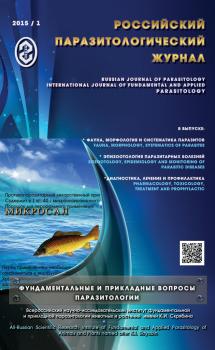Objective of research: to provide data on the effect of tomato plants with different varietal resistance and immuno-chemical characteristics on the morpho-physiological and population features of root-knot nematode Meloidogyne incognita (Kofoid, White, 1919), Chitwood, 1949. Materials and methods: Tomato plants were infected and cultivated by standard methods. Parameters of nematodes (size, fertility, duration of life cycle, age and sex structure) of 156 lines in hybrids and cultivars of tomato Lycopersicon esculentum (Mill.) with different degrees of resistance to that nematode (resistance index — 20% to 90%), as well the tomato cultivar (F1Karlson) which immune status was corrected with the use of immunomodulators. Results and discussion: The increased resistance of plants has a significant effect on total morpho-physiological and some population parameters (size, fertility, time to reach sexual maturity, terms of development, the number of males, etc.). This fact may indicate the modifying effect of immunity factors on parasites. Morpho-physiological features express a regular association between the level of immunity and standard features of parasitic invasions, which is required to ensure a relative stability of host-parasite systems in each particular case.
immunity, elicitors, morpho-physiological and population characteristics, Meloidogyne incognita, Lycopersicon esculentum.
Введение
В настоящее время большой интерес вызывает проблема биоразнообразия на всех уровнях его проявления. Международная программа исследования биоразнообразия вклю- чает три основных уровня: генетический, таксономический и экологический (сообщества и экосистемы). В паразитологии особое внимание исследователей привлекает один из аспектов изучения биоразнообразия — проблема модификационной изменчивости, т.е. те особенности изменения морфо-физиологического состояния паразита, которые определяются действием конкретных факторов среды и имеют закономерно-зависимый характер.
Ранее нами было показано, что при паразитировании нематод одного вида на растениях-хозяевах различной таксономической принадлежности могут образовываться достаточно дискретные формы, т.е. внутривидовые группировки, в той или иной степени различающиеся по морфо-физиологическим характеристикам [2].
В настоящей работе приводятся данные о влиянии растений-хозяев разной сортовой принадлежности и иммуно-химических характеристик на морфо-физиологические и популяционные особенности галловой нематоды Meloidogyne incognita (Kofoid, White, 1919), Chitwood, 1949.
1. Timofeev-Resovskiy N.V., Yablokov A.V.. Glotov N.V. Ocherk ucheniya o populyatsiyah [Essay on the doctrine of the population]. M., Nauka, 1973, 229 p. (In Russian).
2. Udalova Zh.V. Features of the relationship between the root-knot nematode and different species of host plants. Materialy mezhdunarodnoy nauchnoy konferentsii «Fauna biologiya, morfologiya i sistematika parazitov» [Proc. of int. sci. conf. «Fauna, biology, morphology and systematics of parasites»], M., 2006, pp. 291-293. (In Russian).
3. Filipchenko Yu.A. Izmenchivost’ i metody ee izucheniya [Variability and methods of its study]. M., Nauka, 1978, 236 p. (In Russian).
4. Shvarc S.S., Smirnov V.S., Dobrinskii L.N. Metod morfofiziologicheskih indikatorov v ekologii nazemnyh pozvonochnyh [The method of morpho-physiological indicators in the ecology of terrestrial vertebrates]. Sverdlovsk, Trudy IERiZh, 1968, 387p. (In Russian).
5. Papodopoulou J., Triantaphillou A.C. Sex differentiation in Meloidogyne incognita and anatomical evidence of sex reversal. J. Nematol., 1982, vol. 14, no.4, pp. 549-566.
6. Triantaphillou, A.С. Oogenesis in the root-knot nematode Meloidogyne javanica. Nematologica, 1962, vol. 7, no. 2, pp. 105.
7. Udalova Zh.V., Zinovyeva S.V. Systemic induced plant resistance as a control strategy to parasites alternative to pesticides. Ecological Engineering and Environment Protection, 2015, no. 2, pp. 59-66.
8. Zinovyeva S.V., Ozeretskovskaya O.L., Ilyinskaya L.I., Yasyukоva N.I., Udalova. Zh.V. Biogenic elicitor (arachidonic acid) induced resistance in tomato to Meloidogyne incognita. Rus. J. Nematol., 1995, vol. 3, no. 1, pp. 65-67.





